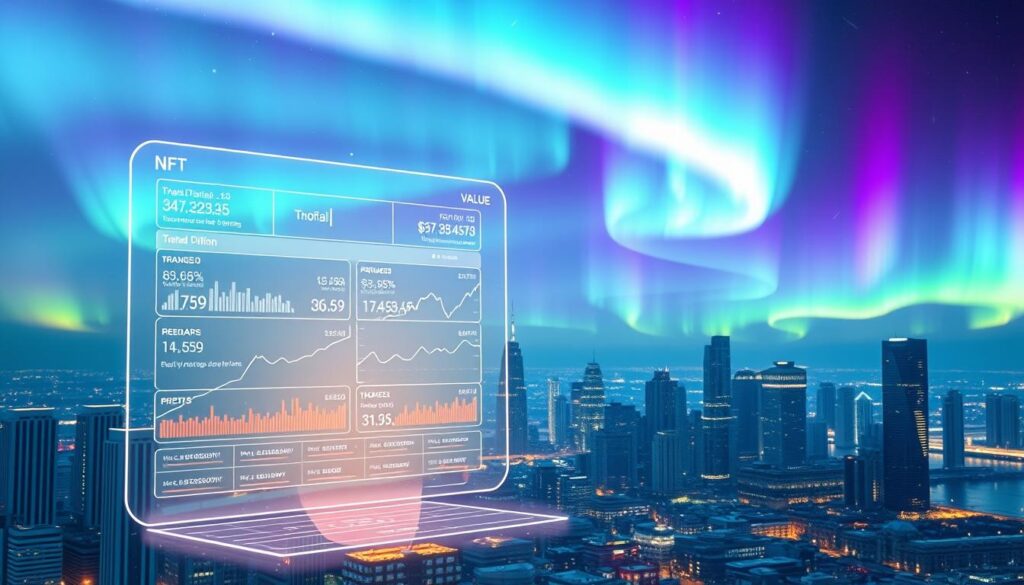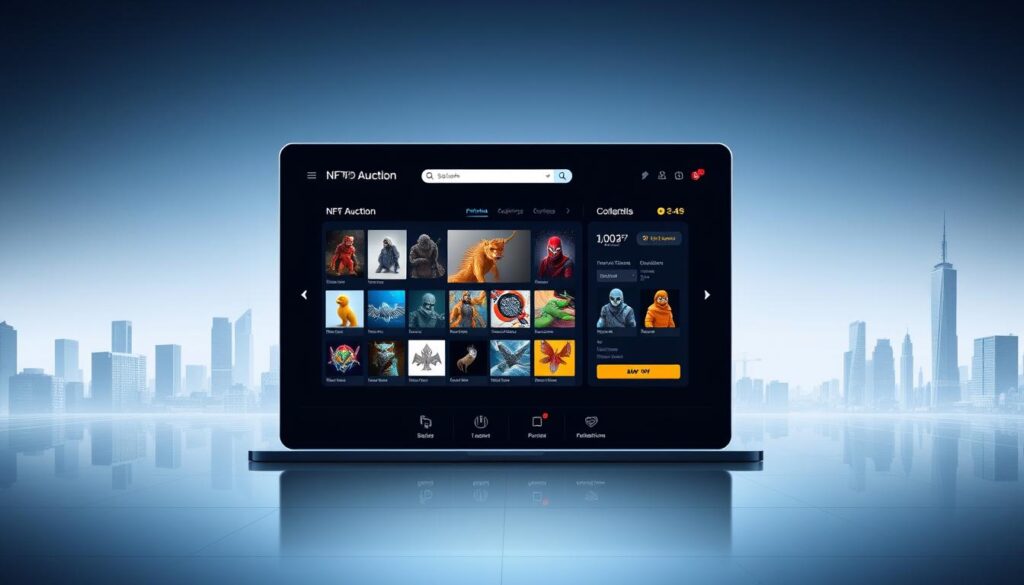Now Reading: Discover the Best NFT Marketplace Platform Buying Selling
- 01
Discover the Best NFT Marketplace Platform Buying Selling
Discover the Best NFT Marketplace Platform Buying Selling
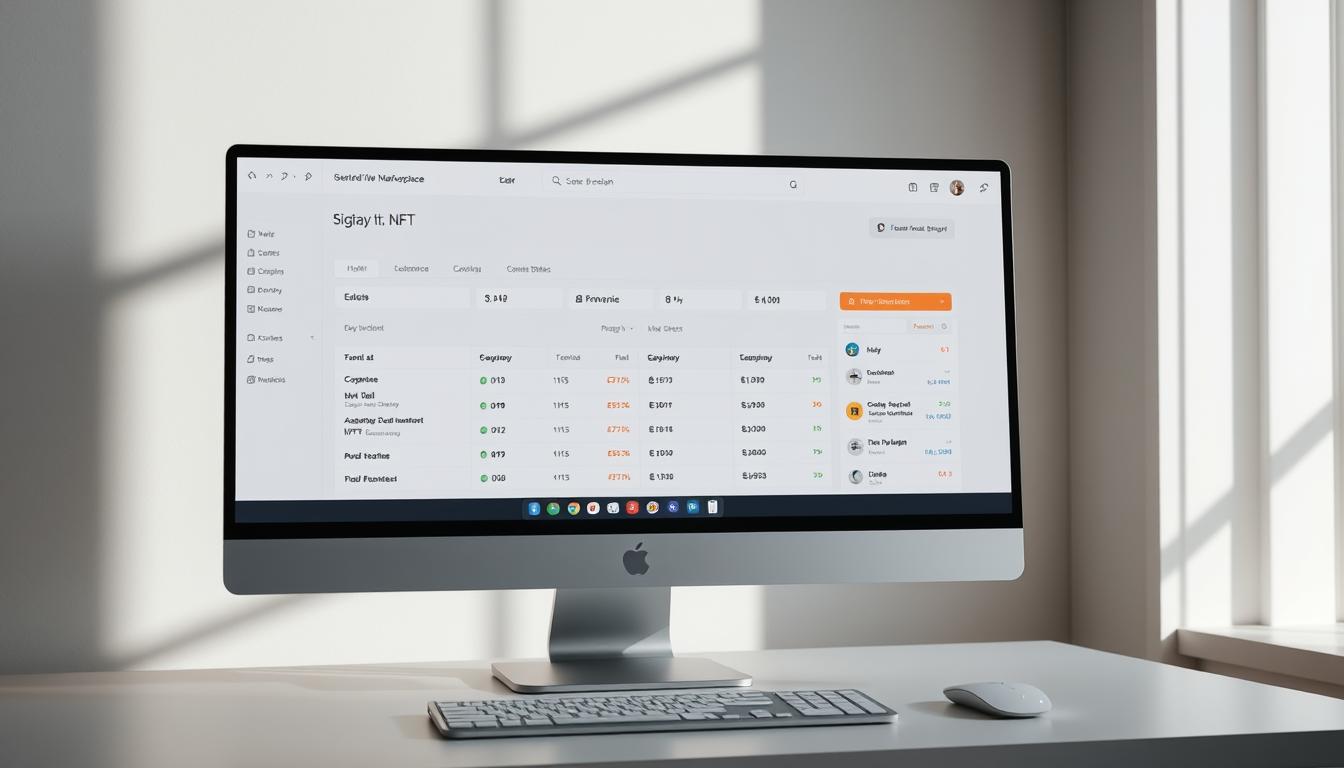
Welcome to the exciting realm of digital collectibles and unique digital assets. This comprehensive guide serves as your essential roadmap through the dynamic world of non-fungible tokens. We’ll explore how these innovative spaces have revolutionised how creators and collectors connect in today’s digital economy.
Our analysis covers over 80 different venues where these unique digital items are traded. We’ve carefully evaluated popular options like OpenSea, Rarible, and Crypto.com. Each space offers distinct features catering to various needs and preferences.
Whether you’re an artist seeking to showcase your work or a collector hunting for rare items, choosing the right environment is crucial. This guide helps you navigate this complex ecosystem with confidence. You’ll learn to evaluate options based on transaction costs, security measures, and usability features.
The impact of these digital trading spaces extends across industries like art, gaming, and entertainment. They enable creators to monetise their work while providing collectors with verifiable ownership. This transformation represents a significant shift in how we value and exchange digital creations.
Key Takeaways
- This guide analyses over 80 different digital trading venues for unique tokens
- Popular options include OpenSea, Rarible, and Crypto.com among others
- Different spaces cater to specific needs like art, gaming, or sports collectibles
- Evaluation criteria include transaction fees, security, and user experience
- These environments have transformed digital art, music, and entertainment industries
- Choosing the right space depends on your specific goals as creator or collector
- The guide provides practical information for confident decision-making
Introduction to NFT Marketplaces
Digital storefronts for unique blockchain-based items have transformed how we interact with creative work. These spaces are central hubs where creators and buyers connect directly in the Web3 ecosystem.
Transactions occur on a peer-to-peer basis. This method eliminates traditional intermediaries. Every exchange is secured by blockchain technology, ensuring trust and transparency.
For artists and developers, these environments offer unprecedented global reach. They can showcase and monetise their digital assets to a worldwide audience without restrictions.
Collectors gain access to a vast array of unique items. This includes everything from digital art and music to virtual real estate. Each token represents a one-of-a-kind asset with verified ownership.
Understanding these fundamental spaces is crucial for anyone entering this dynamic field. It empowers both creators and collectors to navigate the ecosystem confidently.
Understanding NFT Marketplaces
At the heart of the digital revolution lies a new class of verifiable property. These unique items represent a fundamental shift in how we establish ownership in the digital realm.
What Are NFTs and Their Significance
Non-fungible tokens are unique digital assets that exist on blockchain networks. Unlike cryptocurrencies, each token represents ownership of specific items that cannot be replicated.
The significance of these tokens lies in their ability to prove authenticity. In a world where digital content can be copied infinitely, they create verifiable scarcity.
Digital artists primarily benefit from this technology. It helps them assert the originality of their work through technological solutions for digital provenance.
Each token contains distinct information stored in smart contracts. This ensures uniqueness and a verifiable ownership history on the blockchain.
The Evolution of Digital Asset Trading
Digital asset trading began with early cryptocurrency experiments. It accelerated dramatically with token standards like ERC-721 on Ethereum.
Trading has transformed from simple peer-to-peer exchanges to sophisticated ecosystems. Modern systems support auctions, fixed-price sales, and fractional ownership.
The progression from physical collectibles to digital assets represents a paradigm shift. These tokens provide the infrastructure for valuing and trading items in new ways.
Understanding this evolution is fundamental for navigating today’s trading environments effectively. It contextualises the value propositions and mechanisms used across different platforms.
NFT marketplace platform buying selling: How It Works
The process of acquiring and transferring unique digital items on a dedicated space involves a series of automated steps. Creators list their assets with descriptions and set prices. Buyers then browse these offerings to find items they wish to own.
This digital environment facilitates direct exchanges between parties. It uses advanced technology to ensure every action is secure and transparent.
Transaction Mechanics and Associated Costs
Completing a transaction follows a clear path. You first connect a digital wallet to the space. Then, you select an item and agree on a price, either fixed or through bidding.
After initiation, the blockchain network confirms the exchange. Final ownership transfers to your wallet. This process creates a permanent, unchangeable record.
Several fees are part of these transactions. The table below outlines the typical costs involved when using a digital asset platform.
| Fee Type | Purpose | Typical Range |
|---|---|---|
| Platform Commission | Fee charged by the service for facilitating the trade. | 1% – 15% |
| Blockchain Gas Fee | Cost for processing and validating the transaction on the network. | Variable |
| Listing or Minting Fee | One-time cost for initially creating or listing an asset. | Fixed or Variable |
The Central Role of Automated Agreements
Smart contracts are the backbone of operations. These are self-executing agreements with terms written directly into code. They automate processes like transfers and royalty payments.
When a sale happens, these smart contracts handle everything automatically. They move the asset to the buyer and the payment to the seller. They also ensure creators receive royalties on future sales.
This automation reduces fraud and enables trustless interactions. Understanding these smart contracts helps users appreciate the security and efficiency of the system.
Overview of Top General NFT Marketplaces
Two prominent hubs dominate the landscape for general digital asset trading. These spaces cater to diverse interests while maintaining distinct approaches to serving their communities.
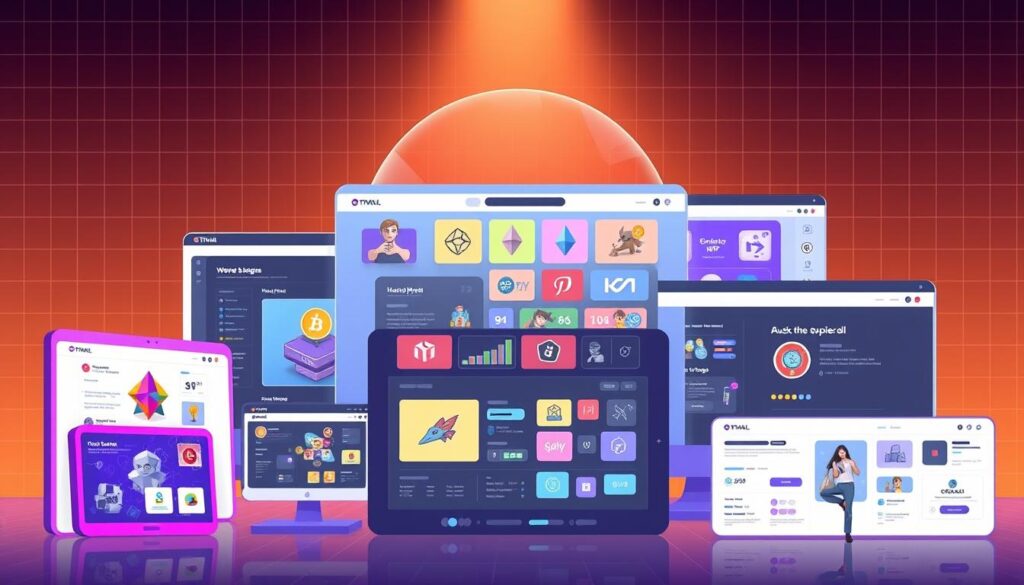
OpenSea and Rarible at a Glance
OpenSea launched in 2017 as the pioneering space for tokenised items. It supports over 80 million unique digital assets across multiple blockchain networks.
The environment categorises items into photography, music, virtual worlds and trading cards. This comprehensive selection makes it ideal for users seeking variety.
Rarible emerged in 2020 with a focus on creator empowerment. It operates as a non-custodial space where participants maintain full control over their collectibles.
Comparative Features and User Base
Both spaces charge a 2.5% transaction fee but differ significantly in royalty structures. OpenSea offers creators up to 10% royalties, while Rarible provides up to 50%.
OpenSea’s massive user base ensures high liquidity for assets. This makes reselling potentially easier compared to smaller marketplaces.
Rarible distinguishes itself with community governance features and lazy minting capabilities. These appeal particularly to creators prioritising royalty income and participation.
Each platform serves as an excellent starting point for newcomers. The choice depends on whether users value selection liquidity or creator-friendly terms.
Art-Based NFT Marketplaces
Exclusive galleries for digital creations have emerged as premium destinations for serious collectors. These specialised venues focus exclusively on high-quality digital art, maintaining strict curation standards.
The curated approach ensures exceptional artistic merit. Individual artworks receive greater visibility than on crowded general venues.
Curated Platforms Like SuperRare and Foundation
SuperRare operates as a highly selective peer-to-peer environment for unique digital artworks. The platform accepts only about 1% of applying creators, ensuring only the finest art reaches collectors.
Foundation launched in 2021 with an invite-only model designed specifically for art connoisseurs. Both venues provide artists with prestigious platforms that enhance their work’s perceived value.
| Feature | SuperRare | Foundation |
|---|---|---|
| Artist Acceptance Rate | Approximately 1% | Invite-only |
| Transaction Fee | 3% | 5% |
| Artist Royalties | 10% on secondary sales | 10% on secondary sales |
| Artwork Count | 32,000+ digital pieces | From 400+ vetted creators |
| Special Feature | Community governance via $RARE token | 70+ art categories |
These exclusive environments benefit both creators and collectors. Artists gain ongoing income through perpetual royalties. Collectors access investment-grade digital art with verified authenticity.
Gaming and Entertainment NFT Marketplaces
Virtual gaming spaces now offer players unprecedented control over their in-game assets and collectibles. These specialised environments focus on interactive experiences where digital items gain real-world value.
Players can truly own their gaming items across different ecosystems. This represents a significant shift from traditional gaming models.
Platforms for In-Game Assets and Digital Collectibles
Axie Infinity stands out as a pioneering gaming environment. Users trade unique digital creatures called Axies that serve as playable characters. The space charges a 4.25% commission on transactions.
This demonstrates the play-to-earn model where gaming items hold tangible value. Players can monetise their activities by trading valuable digital assets earned through gameplay.
Magic Eden has emerged as a premier multi-chain destination. It seamlessly integrates with Solana, Ethereum, Bitcoin, and Polygon networks. The environment supports over 7,000 unique collections.
Transaction fees remain competitive at 2% for sellers. These specialised spaces provide dedicated areas for gaming enthusiasts to discover and invest in interactive digital assets.
Marketplaces for a Variety of Digital Assets
Modern digital asset spaces now cater to collectors with varied interests across multiple categories. These comprehensive environments offer access to everything from traditional collectibles to cutting-edge virtual properties.
These versatile spaces recognise that token technology extends far beyond art. They support categories including virtual land parcels, metaverse assets, and music rights. This diversity provides unique opportunities for different types of users.
From Collectibles to Virtual Real Estate
Crypto.com operates as a cryptocurrency exchange with integrated trading capabilities. It supports smooth transactions across multiple blockchain networks with numerous safelisted collections.
The environment charges 5% transaction fees with 10% creator royalties. A significant advantage is the elimination of gas fees when using the Crypto.com Wallet. Minting remains free except for a modest $3 submission fee.
Decentraland represents the virtual real estate segment. It operates as an immersive VR world where users purchase, develop, and trade digital land parcels. The space charges a competitive 2.5% commission fee.
| Feature | Crypto.com | Decentraland |
|---|---|---|
| Primary Focus | Multi-category digital items | Virtual real estate and experiences |
| Transaction Fee | 5% | 2.5% |
| Creator Royalties | 10% on secondary sales | Varies by creator |
| Special Advantage | Gas-free purchases with native wallet | Full virtual world integration |
Music tokens enable artists to tokenise songs or exclusive content. Fans gain verifiable ownership while creators retain more control. These diverse environments cater to collectors with broad interests.
Virtual property tokens grant owners development rights and monetisation opportunities. They mirror real-world ownership dynamics in digital environments. This creates exciting possibilities for digital entrepreneurs.
Security Measures in NFT Transactions
Security forms the foundation of trust in digital asset exchanges and ownership verification. Robust protocols protect valuable digital items throughout their lifecycle. These measures ensure both creators and collectors can operate with confidence.
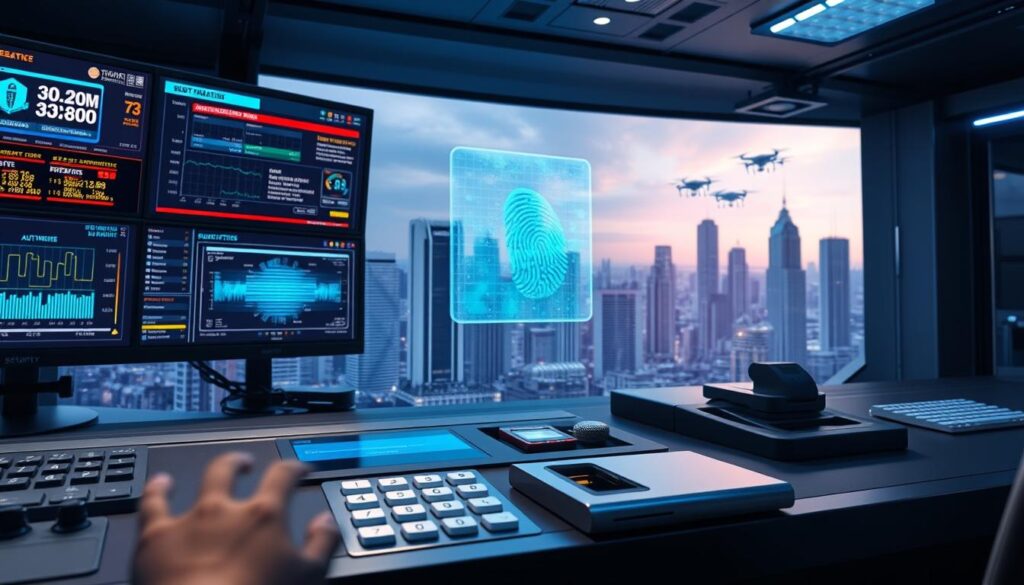
Leading environments implement multiple protection layers. These include two-factor authentication and SSL encryption. Smart contract audits further enhance security for all participants.
Wallet Integration and Blockchain Verification
A crypto wallet serves as the primary security gateway for digital asset transactions. Users connect wallets like MetaMask or Trust Wallet to maintain control. This self-custody approach ensures personal responsibility for asset protection.
The blockchain provides inherent security through decentralised ledger technology. Every exchange is cryptographically secured and permanently recorded. This makes alteration or counterfeiting nearly impossible for digital items.
Users should verify their chosen wallet employs robust features. Seed phrase backup and biometric authentication prevent unauthorised access. Understanding these processes empowers proactive security measures.
Evaluating Fees and Gas Costs in NFT Transactions
Cost considerations play a pivotal role in determining the profitability of digital asset exchanges across various trading environments. Understanding the complete fee structure helps participants make informed decisions about where to conduct their activities.
Financial planning requires accounting for multiple expense categories. These include platform commissions, network processing costs, and additional charges that vary by service.
Understanding Transaction and Commission Fees
Transaction fees represent the commission charged by services for facilitating trades. These typically range from 1% to 5% depending on the environment used.
Gas fees constitute the blockchain network costs required to process and validate transactions. Ethereum-based systems experience highly variable gas charges that fluctuate based on network demand.
Different environments employ distinct fee structures. OpenSea charges 2.5% commission with creator royalties up to 10%. Rarible maintains similar commission rates but offers different royalty arrangements.
Alternative blockchain networks provide cost-saving opportunities. Platforms using Solana, Binance Smart Chain, or Polygon offer significantly lower gas fees. These can be fractions of Ethereum’s costs during peak periods.
Some services offer gasless transaction options where creators list items without upfront payments. Fees only apply when sales occur, making entry more accessible.
Comparing complete fee structures helps users optimise their strategies. The right choice depends on transaction frequency, asset values, and individual budget constraints.
User Experience and Platform Usability
User-centric design principles have become the cornerstone of successful digital asset trading environments. The interface quality directly impacts how users interact with digital collectibles and influences transaction success rates.
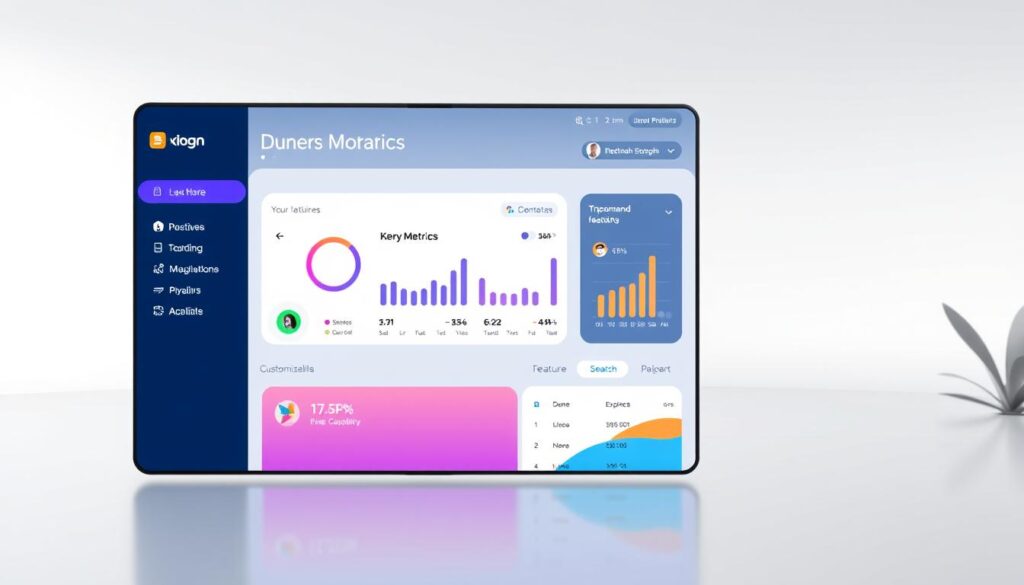
Leading spaces prioritise intuitive navigation and logical workflows. This approach helps both newcomers and experienced traders operate with confidence.
Ease of Navigation and Customisable Features
OpenSea exemplifies beginner-friendly design with its straightforward processes. The interface guides users through creating and trading digital items seamlessly.
Rarible’s clean layout appeals to novice users, while Magic Eden offers a streamlined experience praised for its efficiency. Foundation maintains accessibility for both creators and collectors.
Customisation options enhance versatility across different trading environments. These include adjustable royalty percentages and flexible auction formats.
| Platform Feature | OpenSea | Rarible | Magic Eden | Foundation |
|---|---|---|---|---|
| Beginner-Friendly Rating | Excellent | Very Good | Good | Good |
| Navigation Simplicity | Intuitive | Straightforward | Streamlined | Clean |
| Customisation Options | Comprehensive | Flexible | Moderate | Basic |
Innovative Tools and Customer Support
Advanced features like lazy minting and bulk listing differentiate top-tier environments. Analytics dashboards provide valuable market insights for informed decision-making.
Quality customer support remains essential for user satisfaction. The best platforms offer multiple assistance channels including comprehensive tutorials and responsive help systems.
Continuous improvements to mobile optimisation and accessibility features ensure enjoyable trading experiences for all users.
The Role of Blockchain Technology and Smart Contracts
The technological backbone of digital asset trading environments consists of two revolutionary components. These are the blockchain and smart contracts. They work together to create a secure and automated system.
A blockchain is a decentralised digital ledger. It records every detail of a token’s life. This includes its creation, ownership changes, and descriptive information.
This technology ensures total transparency and immutability. Once data is added, it cannot be changed. This protects against fraud and guarantees authenticity.
Different blockchain networks support these environments. Each offers unique benefits for users and creators. The table below highlights key differences.
| Network | Primary Advantage | Typical Use Case |
|---|---|---|
| Ethereum | Established ecosystem | High-value art and collectibles |
| Solana | High transaction speed | Gaming assets and high-volume trading |
| Polygon | Low network fees | Cost-effective minting and trading |
At the core of every exchange are smart contracts. These are self-executing pieces of code. They automate the entire process without needing a middleman.
When a transaction occurs, the contract acts instantly. It transfers ownership, sends payment, and even pays royalties to the original artist. This automation makes the system efficient and trustworthy.
Understanding these technologies is key to appreciating the power of non-fungible tokens (NFTs). They enable a new level of creator control and user confidence.
Multi-Chain Support and Cross-Platform Trading
Modern trading environments now break down blockchain barriers through advanced cross-network compatibility. This innovation allows digital items to move seamlessly between different distributed ledger systems.

Leading venues like Magic Eden demonstrate this capability with integration across Solana, Ethereum, Bitcoin, and Polygon networks. OpenSea supports over 80 million digital assets across multiple chains.
Comparing Ethereum, Solana, and Polygon
Each blockchain offers distinct advantages for collectors and creators. Understanding these differences helps users select the right environment for their needs.
| Blockchain | Key Strength | Transaction Cost | Ideal For |
|---|---|---|---|
| Ethereum | Established ecosystem | High during congestion | High-value collectibles |
| Solana | Extreme speed | Near-zero fees | Gaming assets |
| Polygon | Ethereum compatibility | Low fees | Cost-conscious trading |
Ethereum remains the dominant network with the largest ecosystem and highest liquidity. However, it faces challenges with gas fees during peak periods.
Solana provides blazing-fast transactions at minimal cost, making it popular for gaming applications. Polygon offers Ethereum compatibility with dramatically reduced fees.
Cross-platform capabilities streamline the experience for collectors. Users can access diverse ecosystems without managing multiple accounts.
Choosing the Best NFT Marketplace for Your Needs
Selecting the right digital trading environment requires thoughtful consideration of your specific objectives and preferences. The ideal choice varies significantly depending on whether you’re a creator, collector, or investor.
Key Factors to Consider
Different nft platforms cater to specialised niches. Some focus on digital art, while others excel in gaming assets or sports collectibles. Understanding these specialisations helps you find environments that match your interests.
Financial considerations play a crucial role in your selection process. Compare commission structures, royalty arrangements, and network costs across various marketplaces. These fees directly impact your overall profitability.
Security measures and user experience should also guide your decision. Look for environments with robust protection protocols and intuitive interfaces. These features ensure safe and enjoyable trading experiences for all participants.
| Platform Type | Best For | Key Features | Fee Structure |
|---|---|---|---|
| General Platforms | Large selections & high liquidity | OpenSea, Rarible | 2.5% commission |
| Art-Focused | Curated digital artworks | SuperRare, Foundation | 3-5% commission |
| Gaming & Sports | In-game assets & collectibles | Axie Infinity, NBA Top Shot | 2-4.25% commission |
| Multi-Service | Integrated crypto trading | Binance NFT, Crypto.com | 5% commission |
Your final choice should balance all these factors while aligning with your personal goals. Many experienced users maintain accounts across multiple nft platforms to access different advantages.
Emerging Trends in the NFT Market
Innovation in the token space is accelerating, introducing novel use cases beyond traditional collectibles. The ecosystem continues to evolve with groundbreaking applications across multiple industries.
These developments demonstrate the maturing nature of blockchain-based assets. They’re moving from speculative investments to practical tools with real-world utility.
How Recent Developments Are Shaping the Future
Fractional ownership models are democratising access to premium digital assets. Multiple investors can now own shares of high-value tokens, enhancing liquidity for expensive pieces.
Dynamic nfts represent a significant leap forward. These programmable tokens can change properties based on external conditions or user interactions.
The integration with physical goods is transforming authentication processes. Luxury brands link tokens to products as verifiable ownership records.
Music nfts are revolutionising artist revenue models. Creators can tokenise songs and royalty streams while bypassing traditional intermediaries.
Cross-chain interoperability improves flexibility across different platforms. This reduces the siloed nature of early infrastructure.
Regulatory frameworks are bringing legitimacy to the space. Governments worldwide are establishing clear guidelines for taxation and consumer protection.
These trends position tokens as enduring components of the digital economy. The focus shifts from speculation to sustainable, utility-driven applications.
Practical Tips for Buying and Selling NFTs
Mastering the practical aspects of digital asset exchange requires understanding key operational steps. This section provides actionable guidance for navigating these processes securely and efficiently.
Setting Up a Crypto Wallet and Managing Transactions
Your journey begins with selecting a compatible digital wallet. Popular choices include MetaMask for Ethereum-based assets and Phantom for Solana networks.
Funding your wallet involves purchasing cryptocurrency from exchanges. You then transfer tokens to your wallet address. Always ensure sufficient funds for both purchases and network fees.
Some services now accept traditional payment methods like credit cards. This lowers barriers for newcomers despite typically higher processing fees.
Guidelines for Secure and Efficient Trading
When acquiring digital items, thorough research is essential. Verify creator authenticity and examine transaction history before committing.
For successful sales, optimise listings with high-quality visuals and strategic pricing. Consider timing your listings during high-traffic periods for maximum visibility.
The creation process requires preparing digital files in accepted formats. Budget appropriately for associated costs and network fees.
Security practices include enabling two-factor authentication and using hardware wallets for valuable holdings. Always monitor network fees before initiating transactions.
Conclusion
Our exploration of various digital asset venues reveals a complex ecosystem with specialised options for different user needs. From general spaces to curated art galleries and gaming environments, each offers unique advantages for creators and collectors.
Understanding fee structures, security measures, and blockchain options remains crucial for confident participation. This knowledge helps users select environments that align with their specific goals, whether creating, collecting, or investing in unique tokens.
The landscape continues evolving with new trends and technologies. For deeper insights into selecting the right environment, explore this comprehensive guide to digital asset spaces. This transformative ecosystem offers unprecedented opportunities for digital ownership and creative expression.
FAQ
What is a non-fungible token?
A non-fungible token is a unique digital asset verified using blockchain technology. Unlike cryptocurrencies such as Bitcoin, each token is one-of-a-kind and cannot be exchanged on a like-for-like basis. They are used to represent ownership of items like digital art, music, and gaming items.
How do I start selling my digital creations?
To sell your digital art or other collectibles, you first need to set up a compatible crypto wallet, such as MetaMask. Then, choose a platform like OpenSea or Rarible, connect your wallet, and use the minting process to create your token. You can then list it for sale, often setting your own price or choosing an auction format.
What are gas fees and transaction costs?
Gas fees are payments made to network validators to process and validate transactions on a blockchain, like Ethereum. These costs can fluctuate based on network congestion. Additionally, most platforms charge a commission fee on secondary sales, which is a percentage of the final sale price.
Are my digital assets secure on these platforms?
A> Security is a priority. Your assets are stored on the blockchain, not the platform itself. Access is managed through your personal crypto wallet and its private keys. Smart contracts automate sales, ensuring terms are fulfilled without a central intermediary. Always use strong security practices for your wallet.
Can I use a credit card to purchase these assets?
Some marketplaces, like Nifty Gateway, allow purchases with a credit card by converting the fiat currency into crypto for the transaction. However, most platforms primarily require a funded cryptocurrency wallet to engage in buying and selling activities directly.
What is the difference between general and curated art platforms?
General marketplaces, such as OpenSea, host a vast range of digital assets from many creators. Curated art platforms like SuperRare and Foundation are more selective, often featuring work from invited artists, which can create a perception of higher value and exclusivity for collectors.
What kinds of items can be traded as tokens?
A> The range is extensive. Beyond digital art and music, you can trade virtual real estate, domain names, and in-game items from projects like Axie Infinity. Essentially, any unique digital or tokenised physical asset can be represented and traded.
How do smart contracts benefit users?
Smart contracts are self-executing agreements with the terms directly written into code. They automatically facilitate, verify, and enforce the transfer of assets. This ensures creators receive royalties from secondary sales and makes peer-to-peer transactions trustless and efficient.


